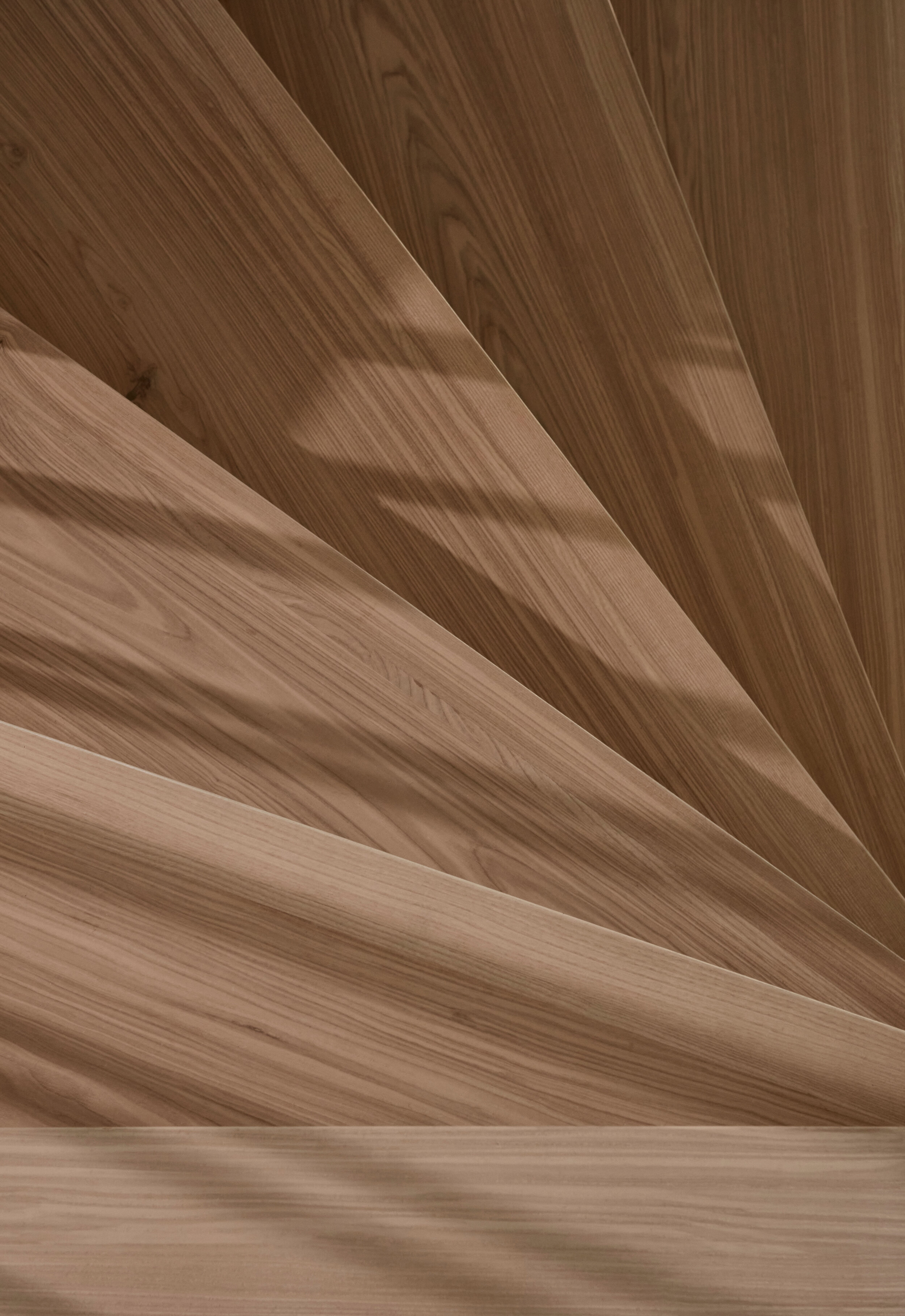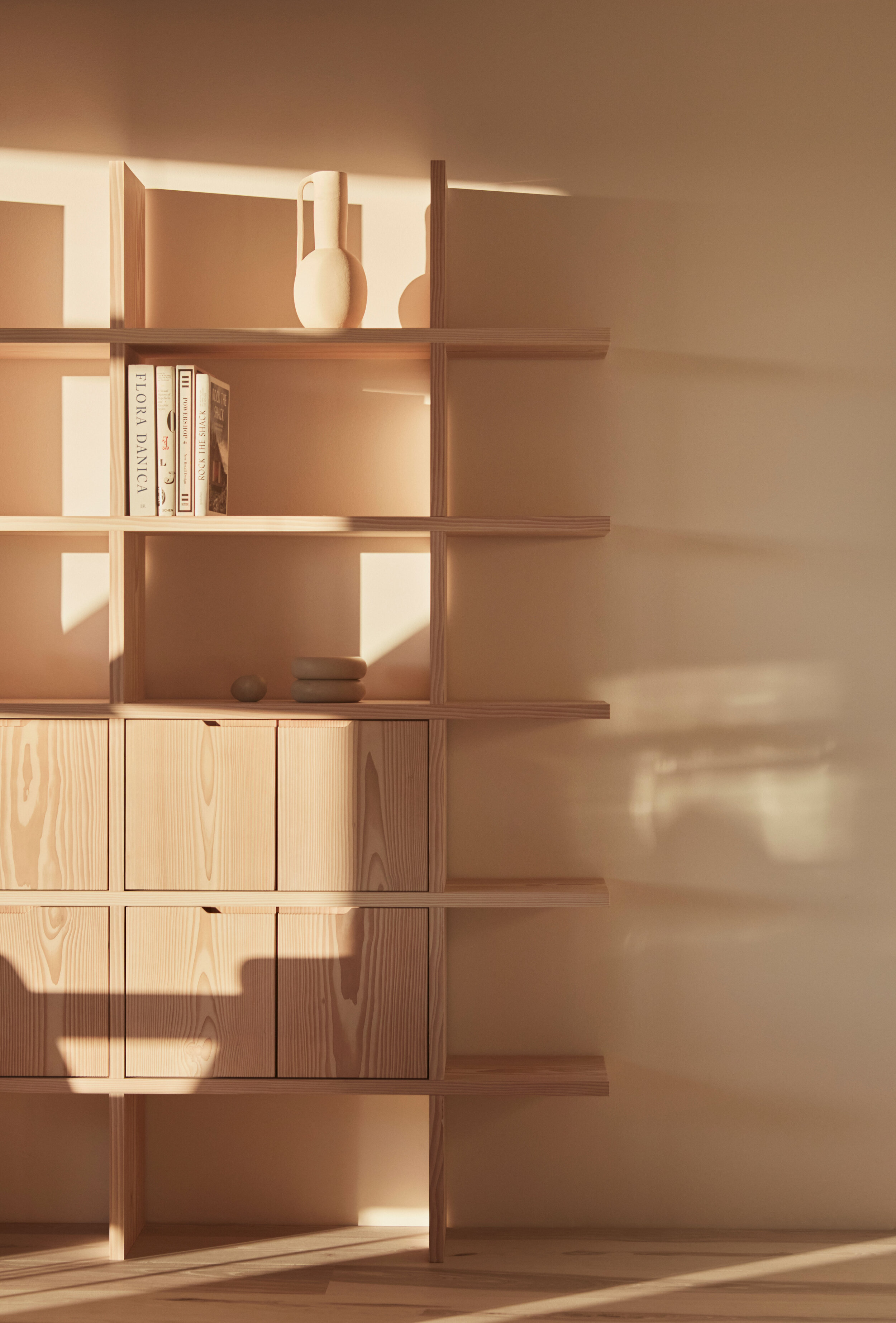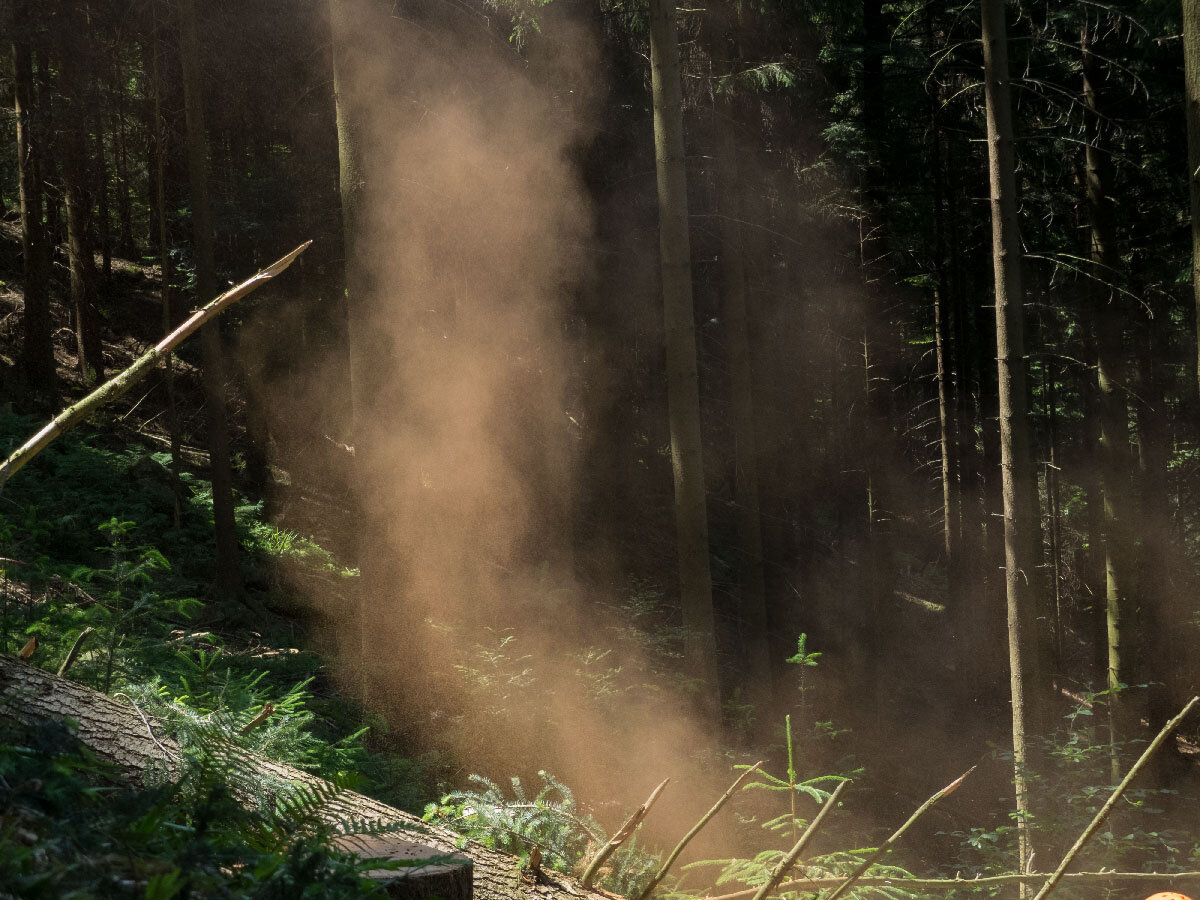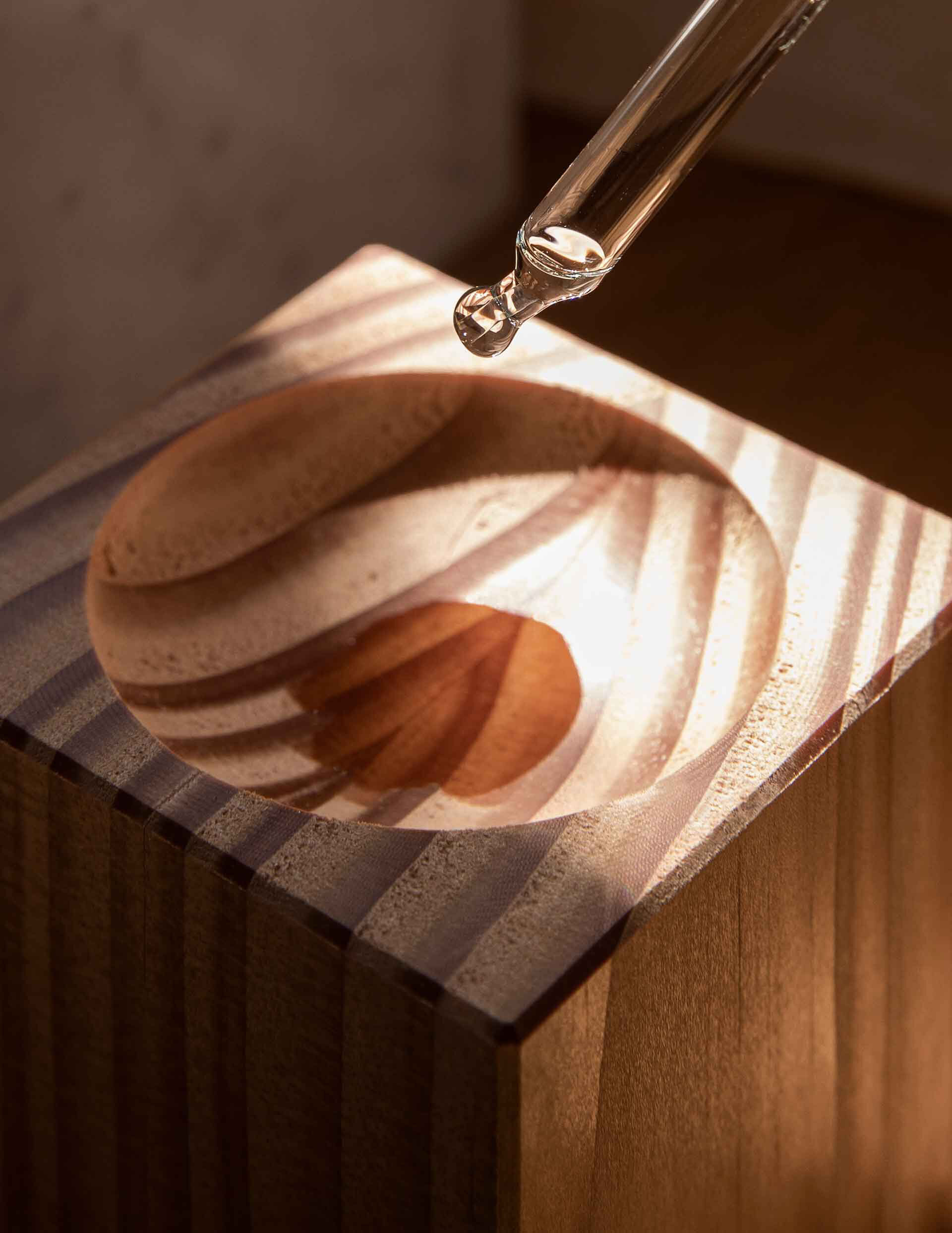
Design / Copenhagen
A NEW DIRECTION with PNEUMA; DESIGN FOR THE MULTI-SENSORY MIND
Words by PNEUMA Photography by Claus Troelsgaard, Jonas Bjerre, Anne-Line Bo, and Studio Pneuma
PNEUMA develops architecture and high-end products that lead to pleasure and beautiful expression.
SCENTS
of PLACE
Studio Pneuma is a multidisciplinary brand and studio that explores the pivotal interactions between spaces, objects and our senses.
The studio’s creations are founded through a background from architecture and design and are led by the belief that good design creates emotional bonds between subject and object. In 2020, Jens Jacob Dinesen joined the studio as a third partner bringing a new perspective and discipline from information science to the collaborative team. Join Camilla Boccardi Christensen and Diana Lindboe, the founders of Pneuma, in this interview as they dive deep into their universe of creativity, exploring subjects of emotional intelligence and nostalgia.
In Conversation with Pneuma
“These different cultural influences are something that we often investigate and return to in our creative work – The longings and the nostalgia that stems from feeling a certain connectedness to people, time and locations that you have limited access to adds some form of tension in the moments of perception; You soak everything in and store it in a deep and emotional place. Nostalgia and emotional intelligence are subjects that we often return to.”
Hi Diana and Camilla! Could you please begin by briefly introducing yourselves and how you came to working together? What was the initial vision for the studio and how has this evolved over the past 2 years?
C & D: Sure, we are both architects and designers, living and working in Copenhagen, Denmark.
We met as students, and by coincidence, we got paired to develop a school project together. We discovered how we complemented each other in our different references and approaches to working creatively – We learned that our differences added something unexpected and exciting to the result. By then, we knew that we would later join forces and start our studio together. So overall, our partnership has grown strong – We are confident about our individual and joint strengths, which feels powerful.
We are keen to learn more about the creative process between you two. How do you approach, collaborate, or divide your roles when taking on a new project?
C & D: In general, we think quite differently in our creative processes. Many subjects are up for debate during a project – That allows our ideas to be questioned, challenged, and modeled into something unique and thoughtful in the spirit of Pneuma and our partnership. We have a significant amount of respect for each other, and we value the nuances that our differences add to our results.
We are both perfectionists, and we both have high work ethics. It is important for us to be thorough and reflective in and about our work.
There is such a power to the sense of smell and smell molecules is an underrated material in architecture. Because of that, we see a real potential for us to unfold a different perspective on how to use the sense of smell and fragrances to achieve pleasure and nourishment.
Does Copenhagen affect the way you approach your craft? How does the city inspire you?
C & D: Copenhagen is an excellent place for us to have our Pneuma base. However, it is always inspiring to look outwards and engage with an international audience. We both have foreign backgrounds; Diana has a Danish/Polish family, and Camilla has a Danish/Italian family. These different cultural influences are something that we often investigate and return to in our creative work – The nostalgia and the longings that come from feeling a certain connectedness to people, time, and locations that you have limited access to, add some form of tension in the moments of perception; You soak everything in and store it in a deep and emotional place. Nostalgia and emotional intelligence are subjects that we often return to.
Where else do you seek inspiration?
C & D: Our most significant source of inspiration comes from our conversations – The space we share when we are together is something that we highly value. Sourcing inspirational material is a big part of our research and development.
We have various tools and exercises that we often return to when we start a dialogue about a new project or product; Finding relevant literature, experiencing art, and visiting architectural references. It becomes fascinating once we start debating and questioning the topics together. It is always exciting when we come across topics that allow space for interpretation and new points of view.
We also get a lot of inspiration from multidisciplinary collaborations. It is always fascinating to learn something new and get asked questions about what we do and how we think from different perspectives.
You have mentioned that Pneuma develops architecture and products that bring attention and focus to feel connected to our physical surroundings through delicate sensory stimulation. How would you describe the relationship between human connection, space, and sensory stimulation and how is this explored in your projects?
C & D: Our general focus stems from our discipline in architecture and design – Almost everything we do arises from a spatial complexity. In our work, we constantly seek to emphasize a connectedness between a subject and an object either in the shape of architecture, design, and/or products. As architects and designers, we are constantly aware of the mediation between the body and its surrounding architecture – A connection that takes place through our senses. Architecture surrounds us and is therefore not only visually grounded – It emits smells, absorbs and gives off thermal qualities, and responds to our movements. These sensory experiences help us to understand and navigate through a given context. We work thoroughly with the term aesthetics; A phenomenon that stems from the ancient Greek word Aisthetikos, meaning sensation; Thus, an aesthetic experience is a sensory experience – We always aim to stimulate such moments in our architecture, design and product experiences.
A Sense of Dinesen - Developed together with artist and researcher, Sissel Tolaas
A Sense of Dinesen - Developed together with artist and researcher, Sissel Tolaas
What intrigues you about spaces and how people interact and connect with them? How is this curiosity explored in your projects? (be it larger, interior projects or smaller, sculptural objects)
C & D: To us, having a spatial focus is almost something existential – Architecture and spaces form the frames of our life. We are proud of our work when we create experiences that provide people with a sense of nourishment, pleasure, and connectedness to their surroundings. It is always intriguing for us to seek those types of results ... that feels very satisfying.
You also make smaller, sculptural objects and spatial fragrances too. Is this a natural progression from what you were already doing?
C & D: Absolutely – Because we are so fascinated by the senses and aesthetics in its full complexity, we are interested in emphasizing the meaning of materiality – A word that we use to describe a matter that does not necessarily have a visual presence for our eyes to catch. Still, we feel it, and it evokes an emotional response.
We often refer to materials from a tangible standpoint, but we usually store impressions and characteristics of a space with all our senses. There is such a power to the sense of smell and smell molecules is an underrated material in architecture. Because of that, we see a real potential for us to unfold a different perspective on how to use the sense of smell and fragrances to achieve pleasure and nourishment.












